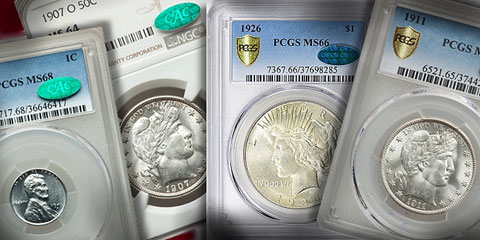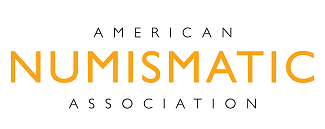GRADING AND CLASSIFICATION
When it Comes to Numismatic Coins There are Several Different Categories Ranging from Proof to Circulated
Circulated coins show wear from being used in daily commerce. There are certain types of uncirculated coins that are very scarce and hard to find for most collectors, which makes collecting circulated coins more feasible for the average collector. When it comes to uncirculated coins, many
serious collectors tend to focus their efforts on uncirculated coins because they tend to be rarer and have a higher long-term investment return.
Proof Coins are also very popular among coin collectors and numismatists. A proof coin is a coin that is struck at least twice with
prepared dies and planchets. It is struck under a higher-than-normal pressure to ensure a full, sharp strike. These coins draw special attention from investors and collectors because they are minted to be perfect.
Grading Scales
The most popular method to use for assigning the level of quality to rare coins is the American Numismatic Association (ANA) grading scale. The ANA grading scale splits circulated and uncirculated coins into twenty-four grades. Thirteen circulated grades and eleven uncirculated grades. The circulated grading scale ranges from the lowest uncirculated grade of Poor-1 to Very Choice About Uncirculated-58. The uncirculated grading scale ranges from Mint State-60 (MS-60) to Mint State-70 (MS-70). An MS-70 designation is the highest of any grading scale and is considered a perfectly struck coin.

How Coins are Graded
There are many people who consider themselves trained professionals when it comes to grading coins. When a certified numismatist inspects a coin for grading, they examine several traits including these below.
· Mint Luster
· Strike
· Preservation
· Color or Toning
· Appeal to the Eye
· Sometimes Mint Mark and Date are taken into factor as well
What Is Mint State?
Mint state refers to a coin’s condition on the Sheldon Coin Grading Scale. Mint state coins can vary in the state from being poorly struck with many heavy marks to showing no visible marks, even after magnification. Mint state coins are marked with “MS” preceding the number on the coin label. Buying the mint state, coins are in the same condition, or virtually the same condition, as when it was first manufactured at the mint—thus “mint state!”
What is the Sheldon Coin Grading Scale?
The Sheldon Coin Grading Scale is a universally recognized, 70-point evaluation of a coin’s condition and value. It was initially developed by Dr. William Herbert Sheldon in 1949 to grade large cents. The Sheldon Scale stretches from 1 to 70. The greater the grade, the better the condition of the coin (and the higher the price).
Certification Organizations
There are several individual organizations that exist for the sole purpose of grading coins. The (PCGS) Professional Coin Grading Service and the (NGC) Numismatic Guaranty Corporation are the two most popular grading services for numismatic coins. For a small fee, coin collectors can send their coins in for grading. If the coin is deemed to have a gradable designation it will be returned to the owner in a certified, graded tamper-resistant container known as a “slab.”





